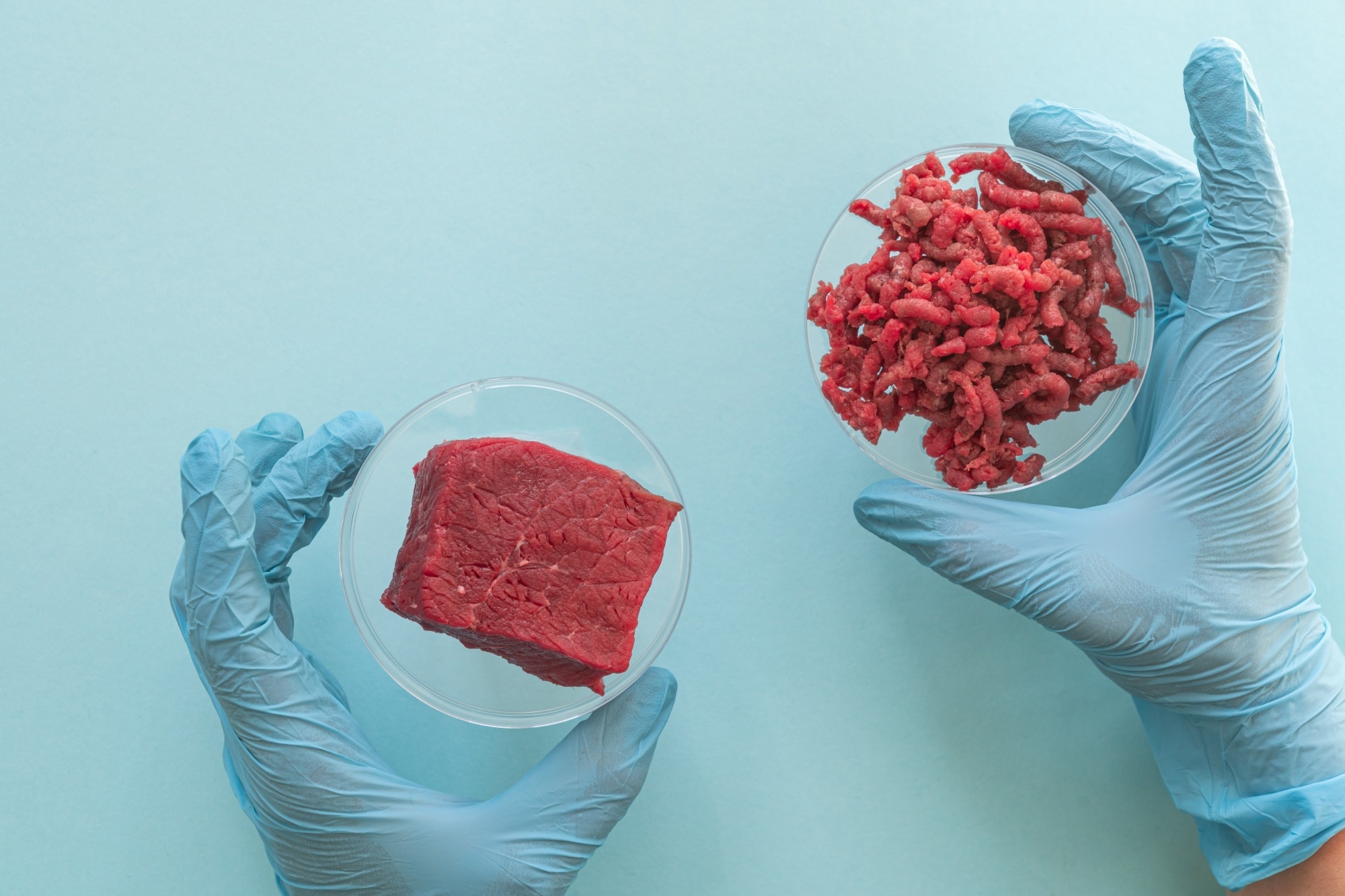A recent study published in the journal Appetite evaluates how consumers in the Netherlands perceived plant-based meat alternatives.
 Study: Fake meat or meat with benefits? How Dutch consumers perceive health and nutritional value of plant-based meat alternatives. Image Credit: Oleksandra Naumenko / Shutterstock.com
Study: Fake meat or meat with benefits? How Dutch consumers perceive health and nutritional value of plant-based meat alternatives. Image Credit: Oleksandra Naumenko / Shutterstock.com
Addressing meat demands with plant-based alternatives
Animal agriculture substantially impacts the health of the population and the planet. The production of meat requires vast water, land, and other resources, thus depleting and degrading the environment.
Meat is a core component of diet across many cultures. The increased demand for meat threatens the well-being and health of consumers and livestock.
The excessive consumption of processed and red meat is a risk factor for metabolic and non-communicable diseases, some cancer types, obesity, and mortality. High meat consumption involves the slaughter of many animals and requires industrialized meat production, which promotes problematic conditions for animal rearing. Thus, reducing the demand for animal products can help create an equitable and sustainable food system.
Substituting meat with plant-based meat alternatives can reduce the consumption of animal-based products. While the global demand for meat is high, the popularity of these alternatives has markedly increased. However, there is limited evidence on the consumer perception of the nutritional value and healthiness of meat alternatives.
About the study
In the present study, researchers surveyed how Dutch consumers perceived plant-based meat alternatives. Eligible individuals were Dutch-speaking adults aged 18 or older.
The researchers devised a questionnaire comprising four parts, the first of which included questions related to shopping behavior and health status were addressed. The second part included questions on the consumption frequency of meat and meat alternatives. Participants were also asked to indicate how often they looked for different information on food packaging, such as health value, shelf life, and price.
Four meat products and four meat alternatives were randomly presented to participants in both groups to indicate their agreement with statements related to the respective products. In the claim group, subjects were shown these products with a nutritional claim of being high in protein.
The third part of the questionnaire was designed to explore the health beliefs related to meat and its alternatives, whereas the fourth part included questions on sociodemographics, such as age, sex, diet, and education level.
Nutritional claims and values were obtained from three supermarket chains. A split-plot two-way analysis of variance (ANOVA) was performed to determine whether participants perceived meat alternatives as healthier than meat and how the nutritional claim influenced their perception.
ANOVA was repeated to examine participants’ willingness to buy either product and their perceptions of the expected salt, protein, fat, and fiber content in the products. The product features that consumers were likely to consider when assessing the health value was also analyzed. The nutritional values of meat alternatives and meat were compared using independent samples t-tests.
Study findings
The study included 120 participants who completed the questionnaire in April 2022. There were no significant differences in age, sex, dietary identity, and education between participants in the no-claim and claim groups. Likewise, there were no significant differences in participants’ willingness to buy meat or its alternatives.
Participants generally perceived meat alternatives as healthier than meat. Moreover, they expected less salt in meat than in its alternatives, with no effects of the nutritional claim.
The study participants also perceived higher protein content in either product when the nutritional claim was specified on packaging labels. They also expected more saturated fats and less fiber in meat than meat alternatives.
There were several differences in the nutritional values of meat alternatives and meat. Meat alternatives had significantly lower levels of saturated fat and protein; however, these products had higher levels of fiber and salt than meat. Participants primarily looked for the price, shelf-life, nutrients, and quantity and infrequently considered health information when buying products.
Moreover, subjects rank-ordered the product features they were likely to consider when assessing the health value. Nutrition information and ingredients of meat products were ranked higher than average, whereas organic origin and packaging design were ranked lower. General information, nutritional value, and ingredients were ranked higher than average for meat alternatives, whereas organic origin, packaging design, and taste were ranked lower.
Conclusions
Dutch consumers perceived meat alternatives as healthier than meat. Nevertheless, the willingness to buy meat alternatives was lower, which was likely due to lower palatability and higher prices of meat alternatives than meat. The study participants also overestimated the protein content of meat alternatives as compared to meat.
These findings indicate that business operators and policymakers should create a transparent and fair environment regarding the nutritional value of meat alternatives for consumers.
Journal reference:
- Ketelings, L., Benerink, E., Havermans, R. C., et al. (2023). Fake meat or meat with benefits? How Dutch consumers perceive health and nutritional value of plant-based meat alternatives. Appetite. doi:10.1016/j.appet.2023.106616